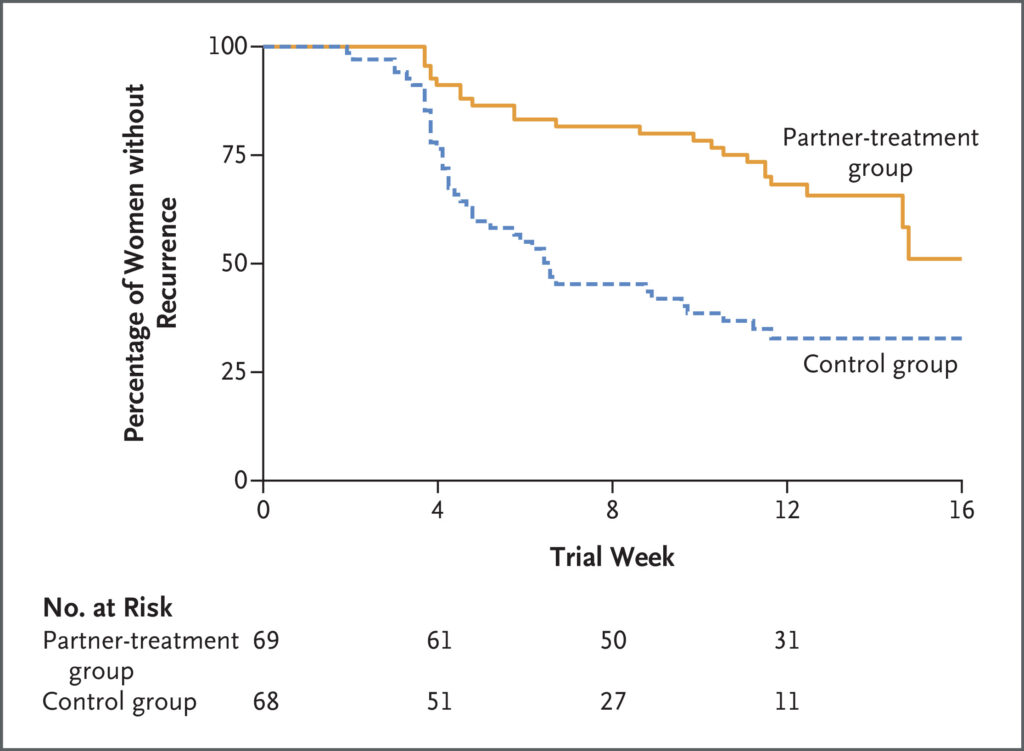Rethinking the Link Between Bacterial Vaginosis and Sexual Transmission
A recent study found that treating both women and their male partners with antibiotics reduced bacterial vaginosis recurrence.

Read Time: 2 minutes
Published:
Bacterial vaginosis (BV) is a common vaginal infection that affects roughly one-third of women between the ages of 15 and 44 every year. Though its exact cause remains unclear, scientists generally attribute BV to an imbalance in “good” and “bad” vaginal bacteria. Imbalances can stem from multiple causes, including the use of feminine hygiene products, sexual activity, and new or multiple sexual partners.
Although a quick dose of antibiotics typically clears the infection within a week, reinfection is common, with 50% of women re-experiencing symptoms within six months. Some infections can become chronic, lasting anywhere from several months to years.
Evidence shows that BV may involve the exchange of bacteria between sexual partners, raising the possibility that it may be linked to sexual transmission. Despite its close link with sexual activity, BV is not considered a sexually transmitted infection (STI). Pathogens such as bacteria and viruses need to be spread via partnered sexual contact (i.e., vaginal, anal, and/or oral sex) for an infection to be considered an STI.
Bacterial exchange during sex has led to questions about whether treating male partners might help reduce chronic BV infection in women. A clinical trial conducted in Australia aimed to see if BV returns less often if both partners are treated. Participants included a total of 164 heterosexual monogamous couples in which the woman was diagnosed with BV. One group of couples had both the man and woman take antibiotics; the control group treated only women, which is the standard approach.

A significant drop in recurrence was observed when both partners were treated. Reduced recurrence improves quality of life by reducing discomfort, health care costs, reliance on antibiotics, and chances of long-term complications (e.g., pelvic inflammatory disease).
The trial was stopped early after treating 150 couples because the data clearly showed that treating both men and women significantly reduced the chances of BV recurring among women within three months. Among the group with both partners receiving treatment, 35% of participants experienced BV recurrence, while 63% of participants in the control group experienced recurrence.
The takeaway is simple: by moving away from treating women only and towards a partner-based approach, BV recurrence drops significantly, solidifying this approach as a more effective, lasting treatment strategy.



